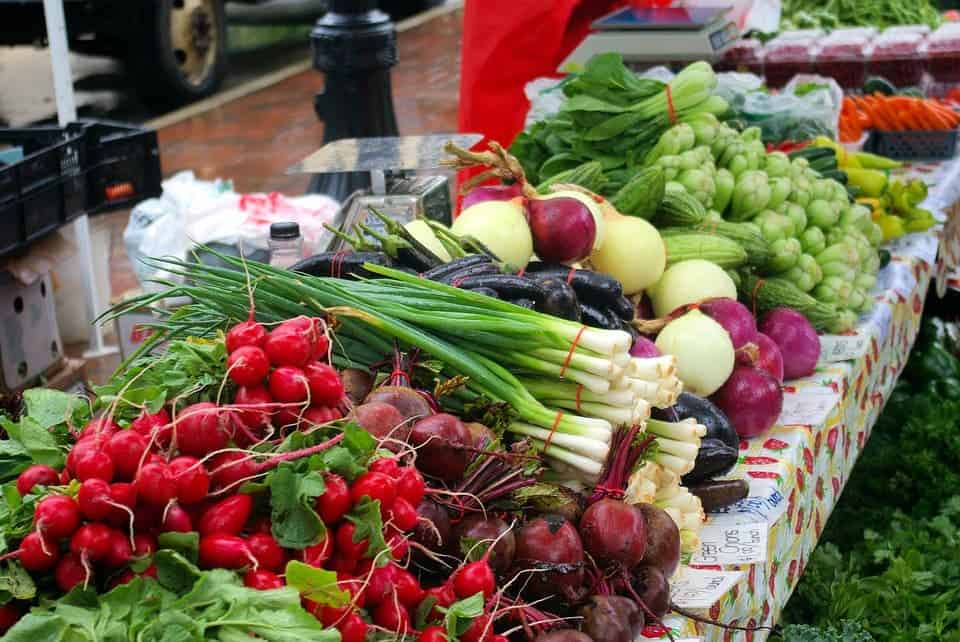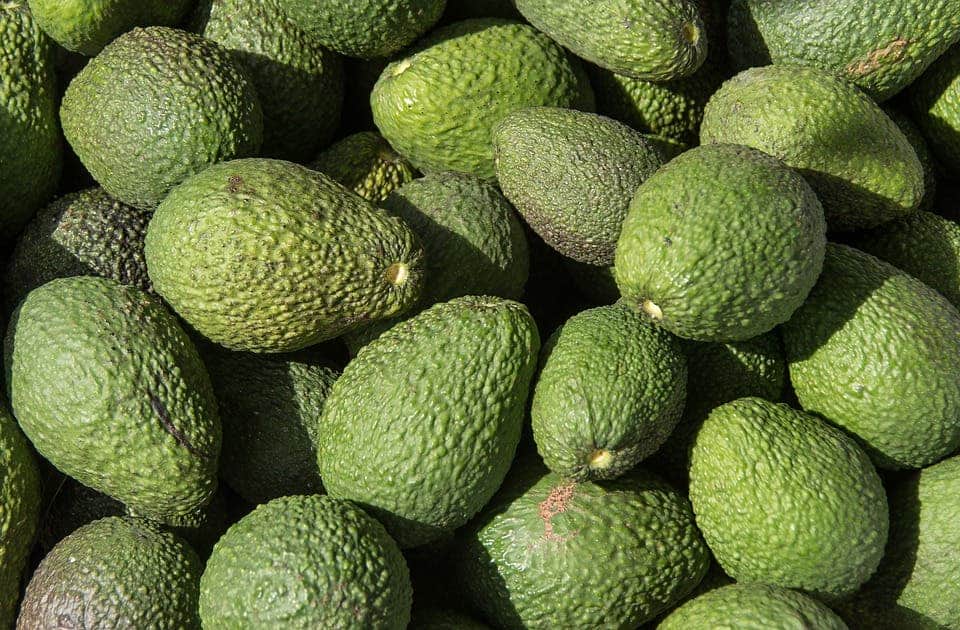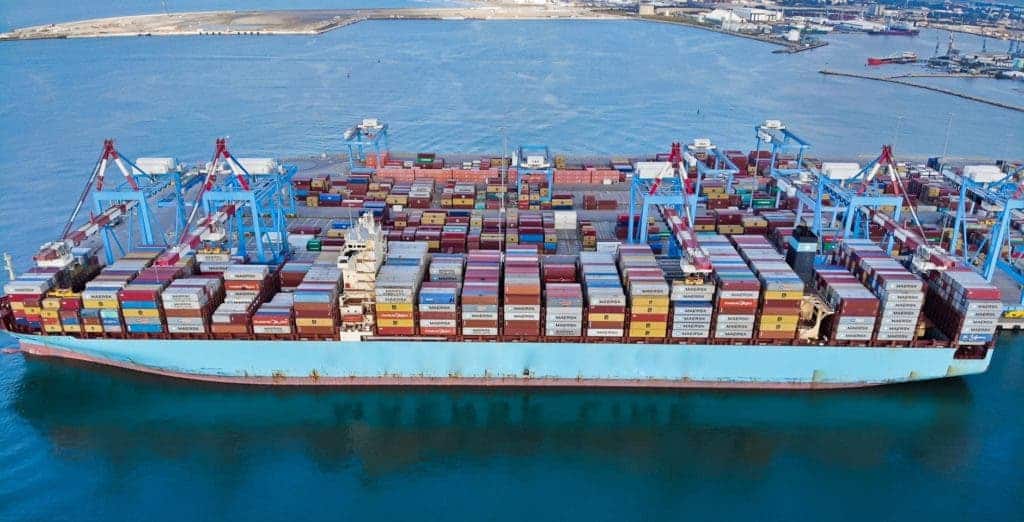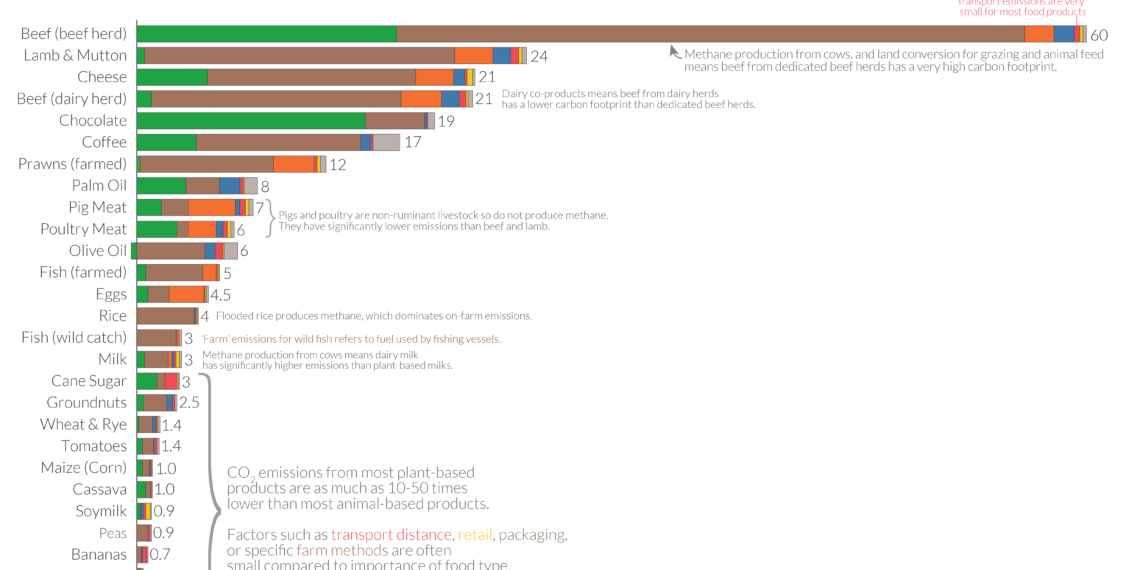In recent years, it’s become increasingly apparent that what we eat is a major source of emissions. But as an environmentally-conscious consumer, it’s not always clear what’s the best course of action to reduce emissions.
A new analysis concludes that eating less carbon-intensive foods is the best thing to do. Eating less meat and dairy is more important than eating locally-sourced foods.
Eat local? Eat better!
Food availability has improved dramatically over the years. We have access to unprecedented richness and diversity, having the luxury of enjoying fruits and vegetables from all corners of the world.
We get our avocados from Mexic, our kiwi from China, our tomatoes from Spain, and our bananas from Brazil. These are just a few examples, but they’re telling of how international our food sources have become. Of course, these foods have to be transported from far away, which produces emissions. So if you’re considering reducing your diet’s emissions, eating local seems like a natural place to start.
The “eat local” movement has gained a lot of traction in recent times, and it makes a lot of sense. Not only are you cutting down on emissions, but you’re supporting local farmers and eating local products.
But if we’re strictly talking about emission, eating locally rarely produces substantial benefits. If you really want to make a difference, it’s more about what you eat than where it comes from.

Specifically, and as researchers have emphasized time and time again, red meat is the biggest culprit when it comes to emissions.
Plant-based foods produce 10-50 times lower emissions than most animal products, even if they come from far away. It’s not just transportation — but all the processes in the supply chain, from processing to transport and packaging, typically account for a small share of emissions.
Instead, the biggest part of farm-associated emissions come from, well, farming. Eating local beef or lamb is much worse than eating exotic fruits or vegetables which come from the other side of the world.
Where emissions come from
Let’s take an avocado as an example. If a kilogram of avocado is shipped from Mexico to Western Europe, it would produce generate 0.27kg CO2 in transport emissions. This is only around 10% of the total emissions associated with that kilogram of avocado.

But farming a kilogram of beef, even without any transportation, generates somewhere between 20 and 60 kg of CO2 — much, much more.
These meat emissions are also pretty much inescapable. No matter how much you try to improve the process, the reason why meat produces emissions has to do with biology.
As a ballpark figure, plants transform about 10% of the solar energy they receive into useful energy. Herbivores transform about 10% of the energy they get from eating plants into useful energy. So no matter how you look at it, most of the food that herbivores eat is not transformed into calories that we can then consume — most is wasted. So instead of using fields to grow food for ourselves, we use fields to grow food to feed animals, but we get 10 times fewer calories (there is a mention to be made about some lands which are not usable for crops and are usable as pastures, but this is not a major component).
This means that farming meat needs a lot of land area, a lot of water, and a lot of energy. All of this is translated into emissions (along with other environmental problems)
Dairy, seafood, and cheese are also very carbon-intensive. Some plant-based products such as chocolate and coffee also have a major impact. In chocolate, this largely happens because of the land-use change, whereas in coffee, it is because of the farming process itself. Still, one kilogram of coffee or chocolate is not consumed as fast as one kilogram of meat or cheese (I know, you love chocolate — but you don’t love it that much).
The exceptions: air freight
The reason why transportation accounts for so little of products that come from far away is that we’ve become very efficient at it — and it’s mostly done by ships, which produce far fewer emissions per mile than planes, for instance.
But when food it air-freighted, it can have a major impact.

It’s difficult to know which products have been air-freighted because they’re rarely labeled as such, but the good news is that air transportation accounts for only 0.16% of food miles.
It’s usually quickly-perishable foods that are air-freighted, such as berries or asparagus. It’s good to keep an eye out for these (and a labeling policy would help), but again, these make up a very, very small portion of total foods.
The bottom line
To sum it up, if you want to cut down on your own emissions, paying more attention to what you eat is a good place to start — you can make a significant difference with this. Even switching from beef to chicken, or having 1-2 meat-free days per week can make a major impact.
The first thing to do is try to reduce meat and dairy consumption. Eating local might be good for supporting local businesses, but when it comes to emissions, it doesn’t make a big difference. The one big exception is products transported via air. It’s not always possible to know which products are air-freighted, but they make up for a small minority of what we see on the shelves.
It’s becoming increasingly difficult to be aware of our food’s environmental impact, and things can vary significantly from place to place, but eating less meat and dairy is a good place to start no matter where you are.
